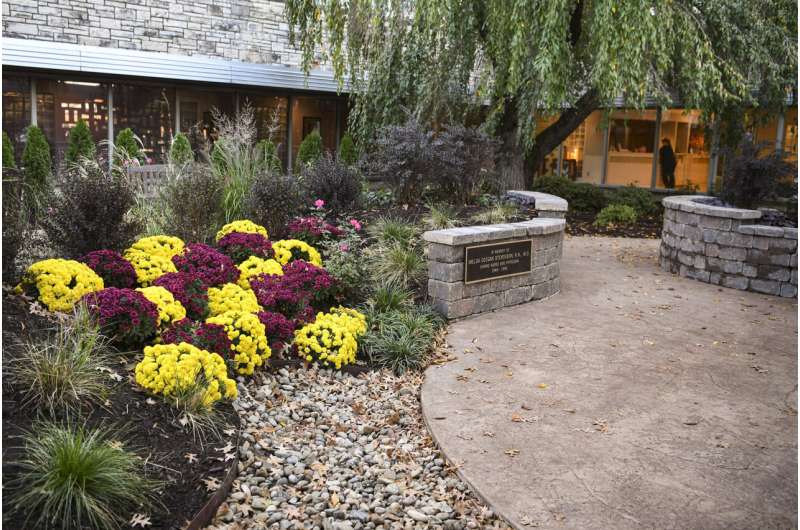Seeing 'green' can ease confusion, anger in navigating hospitals, researcher says

Navigating large hospitals can feel like a mouse circling around in a maze. For patients and visitors, finding the way from Point A to Point B inside a visually-bland medical complex exacerbates an already stressed mental state.
One landscape architecture researcher at West Virginia University has a potential solution: Let nature in.
Research conducted by Shan Jiang showed that introducing nature into large hospitals can humanize the institutional environment and reduce the stress of patients, visitors and healthcare providers.
An associate professor at the Davis College of Agriculture, Natural Resources and Design, Jiang utilized immersive virtual environments—digitally-created "worlds" that users are engrossed in—for a controlled experiment that asked participants to complete various wayfinding tasks.
All participants saw the same hospital layout and room arrangements. However, for one group, participants encountered large windows and nature views among the corridor walls. In contrast, the control group saw solid walls without any daylight or nature views. Participants in the greenspace group used shorter time and walked less distance to complete wayfinding tasks.
"In terms of spatial orientation and wayfinding, window views of nature and small gardens can effectively break down the tedious interiors of large hospital blocks," Jiang said, "and serve as landmarks to aid people's wayfinding and improve their spatial experience."
The study also revealed that participants' mood states, particularly anger and confusion, were "significantly relieved" in the greenspace group.
Jiang's findings are published in the Health Environments Research and Design Journal.
Based on prior research, it's estimated that a patient or hospital visitor must go through at least seven steps in the wayfinding process to arrive at the final destination. The Center for Health Design cites wayfinding issues as an environmental stressor and a concerning topic in healthcare design.
Jiang said those factors, coupled with her own personal experiences (her family members have worked in healthcare) and others' anecdotes of feeling lost in hospitals, prompted the study.
"Large hospitals can be visually welcoming but the functionality and internal circulation are indeed complex and confusing," she said.
The study also found that greenspaces situated at key decision points, such as the main corridor or junction of departmental units, can serve as landmarks that positively attract attention, aid wayfinding and improve navigational experience.
With a background in landscape architecture, Jiang has been interested in the immediate surroundings of people in a smaller scope, particularly the indoor-outdoor relationship and the boundaries between architecture and landscapes.
She's found that garden and plants tend to have strong therapeutic effects on people.
"You may explain such therapeutic effects from multiple perspectives: people's color/hue preferences tend to range from blue to green, nature and plants are positive distractions that could restore people's attentional fatigue, and human beings could have developed genetic preference of greenery from evolutionary perspectives," Jiang said. "All mechanisms together contribute to the positive experience when looking at gardens and nature views."
Jiang noted that many hospitals across Europe have successfully integrated "hospital in a park" concepts. In the United States, the Lucile Packard Children's Hospital Stanford in California features patios and window nooks in every patient room, and most rooms have direct views of a large healing garden, she said.
Jiang's work in this area will continue to grow. She just released a book, "Nature through a Hospital Window: The Therapeutic Benefits of Landscape in Architectural Design," which emphasizes how windows and transparent spaces can strengthen people-nature interactions in healthcare environments.
More information: Shan Jiang et al, Hospital Greenspaces and the Impacts on Wayfinding and Spatial Experience: An Explorative Experiment Through Immersive Virtual Environment (IVE) Techniques, HERD: Health Environments Research & Design Journal (2022). DOI: 10.1177/19375867211067539

















